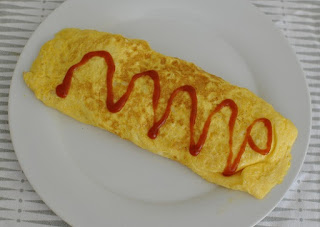 |
| Takikomi rice with mushrooms, carrots and soy flavouring |
Many years ago Mrs Bando from Kashiwa city in Chiba
prefecture, Japan gave me this recipe for takikomi gohan. I was living in Kashiwa at the time, and
we were both members of an ITC club. The ladies would share a pot lunch after
the monthly meetings and several of them were kind enough to give me recipes. Takikomi loosely translates as cooked
together and gohan is rice. The rice
and all other ingredients are cooked together the rice cooker, so that the
flavours absorb into the rice as it cooks. Very easy and very wholesome, particularly if you use brown rice I did in the one pictured.
Serves 4
3 cups rice (white or brown)
3 cups water
1 piece fried tofu, agedofu,
finely sliced (can be omitted) or try firm tofu insteadsmall handful dried shiitake mushrooms, pre-soaked
small handful shimeji mushrooms, divided (or brown mushrooms finely chopped)
1 carrot, cut into matchsticks
1 teaspoon dashi, granulated Japanese stock
2 tablespoons soy sauce
½ teaspoon salt
Place rice in rice cooker. Wash (rinse) rice as you usually
would and add the water to the cooker. Then add the remaining ingredients, stir
together, put lid on and cook as you usually would.






















